Early 20th-Century Kite Cameras, the Pre-Drones
"The hitherto impossible in photography is our specialty," was the motto of early 20th-century photographer George R. Lawrence's Chicago studio. Among Lawrence's great experiments was the use of kites for aerial photography.
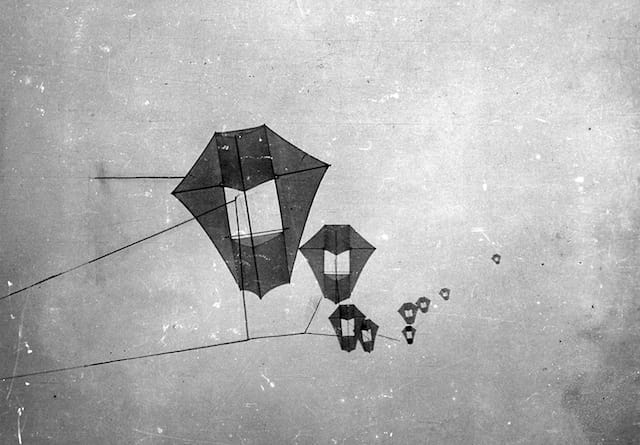
“The hitherto impossible in photography is our specialty,” was the motto of early 20th-century photographer George R. Lawrence’s Chicago studio. Among Lawrence’s great experiments, such as the largest camera in the world built to capture the full length of a new train, was the use of kites for aerial photography.
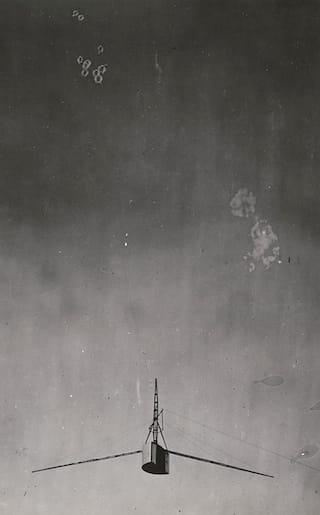
A sort of pre-drone, Lawrence strung together up to 17 Conyne kites to lift a 49 pound camera 2,000 feet into the sky. Using piano wire and a battery’s current, he triggered the shutter from the ground, then allowed the contraption to descend via parachute. Most famously he launched his “Captive Airship,” as he called it, above San Francisco three weeks following the disastrous 1906 earthquake. It was such an incredibly detailed view of the flattened city that some of his contemporaries thought it was a faked composite.
That photograph, along with images of his train of kites and the camera itself, is featured in Decolonized Skies opening this week at Manhattan’s Apexart. Organized by High&Low Bureau, the exhibition won the nonprofit’s Unsolicited Proposal Program, and is focusing on a “civil-oriented visual” of aerial perspectives through both contemporary and historic practitioners.
We’re now a long way from Lawrence’s kites in terms of viewing our world from above (although kite aerial photography is still practiced by a small group), but the access to those views continues to expand with new technology. Below is the famous San Francisco earthquake shot, as well as more of Lawrence’s aerial views from the Library of Congress.
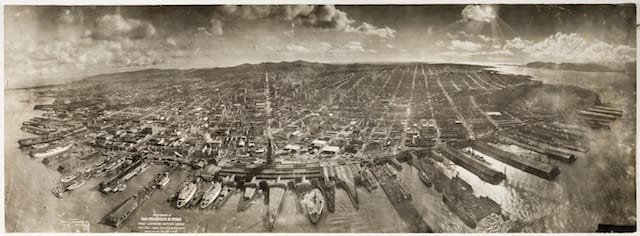

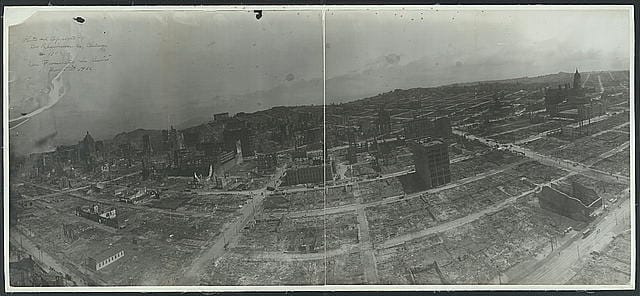
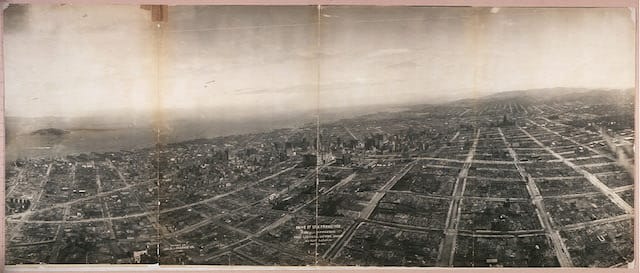
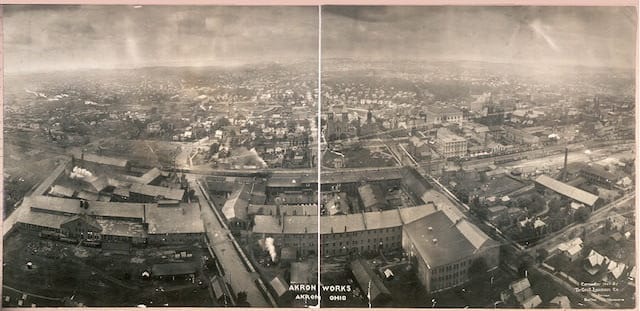
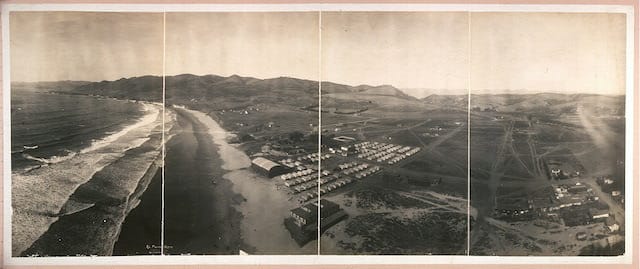
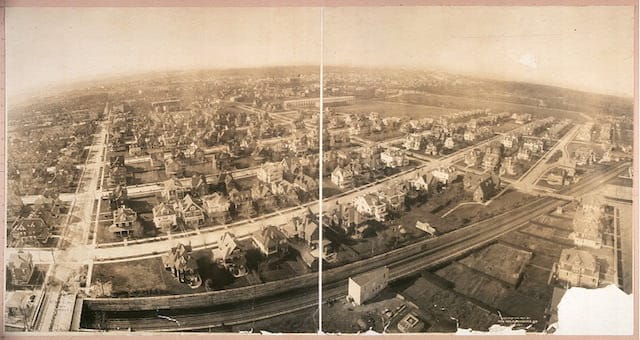
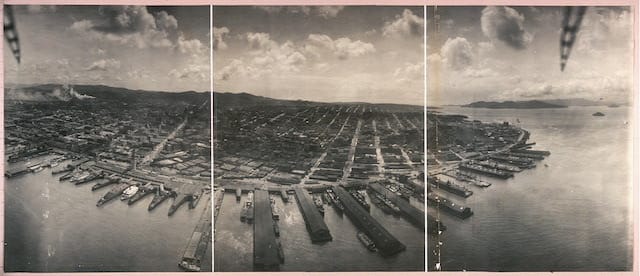

Decolonized Skies is at Apexart (291 Church Street, Tribeca, Manhattan) September 11 to October 25.





